How Much Does Fashion Designer Earn Per Year in The US?
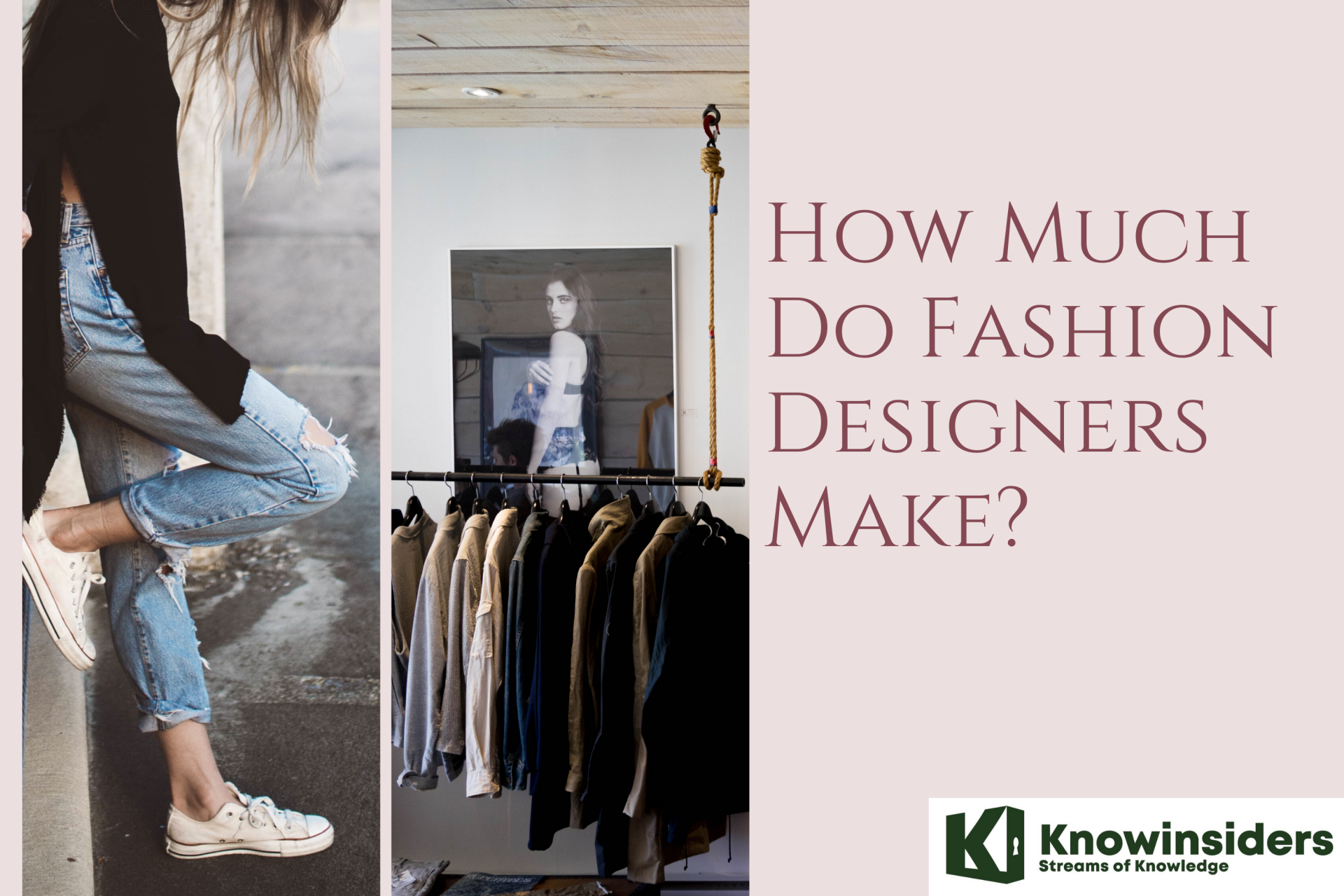 |
| How Much Do Fashion Designers Make? |
The fashion industry is one of the largest industries globally. It offers a range of careers for those with an interest in fashion. A career as a fashion designer may be suited for you if you are a creative person who loves style and design.
A fashion designer uses design principles to create clothing, shoes, and accessories. In this article, we discuss how much fashion designers make, what do fashion designers do and how do fashion bloggers make money. Let's explore!
What is A Fashion Designer?
Fashion designers hold a special place in our world. Their talent and vision play a big role in how people look and also contribute to the cultural and social environment. They love to study fashion trends, sketch designs, select materials and have a part in all the production aspects of their designs. They contribute to the creation of millions, if not billions of pieces of clothing and accessories purchased by consumers on a yearly basis.
Fashion designers promote themselves with the help of marketing and advertising. Some designers market their fashions through runway shows, as well as through their own retail stores. Some also lend their name to other licensed products in order to expand their brand identity. In fact, many celebrity fashion designers actually do very little designing of the collections that bear their name.
The Origin of Fashion Designers
Charles Frederick Worth is considered the father of haute couture. An Englishman, he opened his couture house in Paris in 1846. Along with Worth, the Callot sisters, Jeanne Paquin, Jacques Doucet, and Jeanne Lanvin are considered to be among the first modern fashion designers, as compared with the dressmakers of earlier generations. Paris was the center of international fashion for more than one hundred years, with French couturiers setting the trends for Europe and the Western world. But the position of Paris as the undisputed leader of fashion was disrupted by World War II.
During that war, with Paris occupied by the Nazis, American designers and manufacturers were cut off from the fashion leadership of Paris. As a result, American designers began to receive more serious recognition. Claire McCardell, known as the creator of the "American Look," drew some of her inspiration from the vernacular clothing of industrial and rural workers as inspiration. Other American designers such as Hattie Carnegie, Vera Maxwell, Bonnie Cashin, Anne Klein, and Tina Leser had flourishing careers; they helped shape the development of sportswear that reflected the casual American lifestyle.
In the postwar economy, as fashion became a big business, the role of the designer changed. Increasingly, especially in the United States, fashion designers worked closely with store buyers to identify customers' preferences and lifestyle needs. Customer demographics influenced designers to create fashions targeted to specific customer profiles. Through sales events known as "trunk shows," designers traveled to stores with their latest collection in a trunk. This simple and inexpensive marketing technique allowed customers to preview and respond to the designer's new collection, and to buy clothes. Bill Blass was one of many designers who used trunk shows to gain customers, profits, and a growing reputation.
What does a Fashion Designer do?
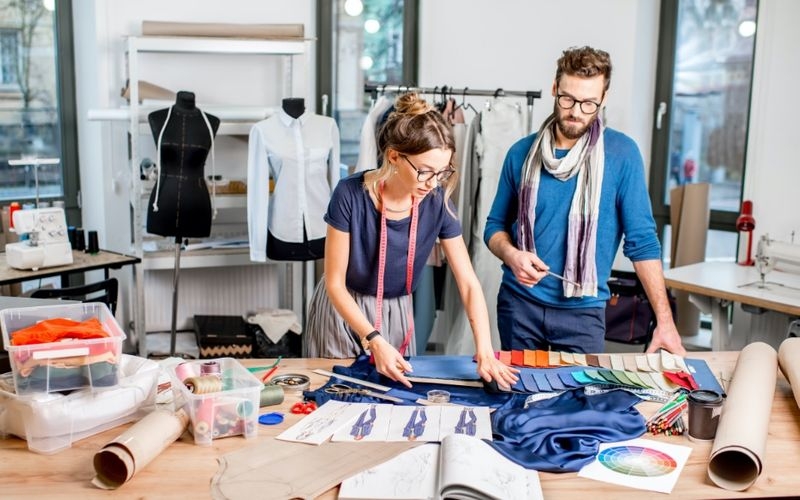 |
| Photo: universeinform |
Fashion designers create women's, men's, and children's apparel. This might include sportswear, maternity wear, outerwear, underwear, formalwear, eyewear, and footwear. There are also accessory designers who design belts, scarves, hats, handbags, and hosiery.
There are fashion designers at different levels of the fashion industry, from well-known couturiers to unknown fashion designers working for ready-to-wear houses, to fashion stylists who might make only small changes in existing designs.
Fashion designers are now beginning to use new technologies such as body-scanning for a better custom fit, or seamless knitting technologies that can produce clothing with just a simple push of a button. Similar to how the sewing machine changed the face of fashion in the past, the future will change due to new technologies, resources, and tools. High-tech textiles will enable fashion designers to create new product lines including those that incorporate sun protection, and other unique qualities. New consumer demands and preferences may even have more to do with function than with fashion.
The design process from design concept to final production takes many months. Researching current fashion trends and making predictions of future trends is the first step in creating the design. Some fashion designers do their own research while others depend on trend reports published by fashion industry trade groups. Trend reports let you know what styles, colors, and fabrics will be popular for a certain season in the near future. Textile manufacturers use these trend reports to design fabrics and patterns while fashion designers begin to sketch designs. Designers then visit manufacturers or trade shows to get samples of fabrics and figure out which fabrics to use with which designs.
A fashion designer takes part in just about every aspect of bringing fashion to the public. Creating the basic design can be done in different ways. It can involve storyboards with sketches, working with a dummy, and sewing pieces of material together. This creating phase is when the designer takes his/her vision that's swirling in the mind's eye and puts it into a visual expression. This first draft of the design is then worked on as the designer develops the first basic prototype.
Computer-aided design (CAD) is being used more and more in the fashion design industry. Although most designers initially sketch designs by hand, a growing number take these hand sketches and put them on the computer. CAD allows designers to look at designs of clothing on virtual models, and in many colors and shapes, therefore saving time by needing fewer adjustments later.
The fashion designer's next step is to take the rough sketch or model and develop a more specific working pattern. Usually, the designer will make a rough model of the design by creating a toile. This is made by sewing inexpensive material (like muslin) to make a rough model of the design. When this is placed on a mannequin-like dress stand, the designer can see how the material will drape or hang on a human form.
Large design houses hire their own pattern-makers, tailors, and sewers who create the master patterns and sew the prototypes. Designers working in small design firms, or those new to the business, usually do most of the technical pattern-making and sewing tasks, in addition to designing the clothing. When the garment is complete, the designer will either modify, scrap, or approve the design for showing in a collection.
A fashion designer usually has full control of a fashion show, often picking the models, determining the price of each garment, and arranging how the garments will be presented. Most designers have assistants to help with all the many small details, but overall, the designer retains full control.
How much money does a Fashion Designer make?
As of Nov 22, 2021, the average weekly pay for a Fashion Designer in the United States is $977 a week.
While ZipRecruiter is seeing weekly wages as high as $2,038 and as low as $346, the majority of Fashion Designer wages currently range between $731 (25th percentile) to $1,231 (75th percentile) across the United States. The average pay range for a Fashion Designer varies greatly (by as much as $500), which suggests there may be many opportunities for advancement and increased pay based on skill level, location and years of experience.
Based on recent job posting activity on ZipRecruiter, the Fashion Designer job market in both Hanoi, VN and throughout the entire state is not very active as few companies are currently hiring. A Fashion Designer in your area makes on average $977 per week or the same as the national average weekly salary of $977. ranks number 1 out of 50 states nationwide for Fashion Designer salaries.
To estimate the most accurate weekly salary range for Fashion Designer jobs, ZipRecruiter continuously scans its database of millions of active jobs published locally throughout America.
What Are The Best-Paying States in the US for Fashion Designers?
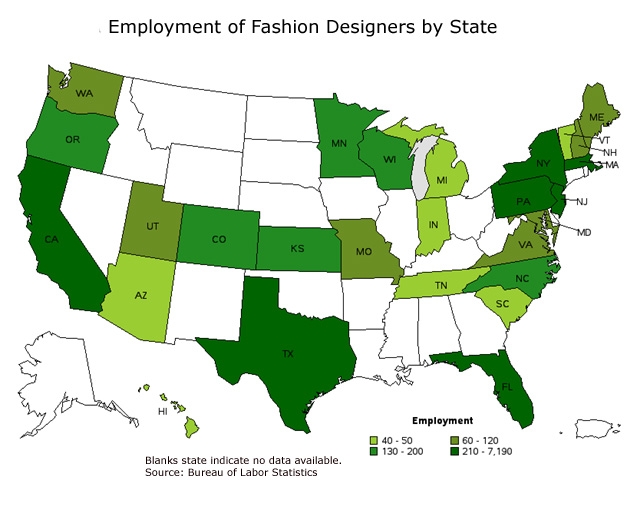 |
| Photo: careerprofiles |
The states and districts that pay Fashion Designers the highest mean salary are Alabama ($98,380), California ($93,870), New York ($92,860), New Hampshire ($81,280), and Oregon ($80,220).
Alabama - $98,380
California - $93,870
New York - $92,860
New Hampshire - $81,280
Oregon - $80,220
What are Top 5 Best Paying Related Fashion Designer Jobs in the U.S.?
We found at least five jobs related to the Fashion Designer job category that pay more per year than a typical Fashion Designer salary. Top examples of these roles include Director Fashion, Fashion Strategy, and Product Development Fashion.
Importantly, all of these jobs are paid between $24,406 (48.0%) and $55,209 (108.7%) more than the average Fashion Designer salary of $50,793. If you’re qualified, getting hired for one of these related Fashion Designer jobs may help you make more money than that of the average Fashion Designer position.
| Job Title | Annual Salary | Monthly Pay | Weekly Pay | Hourly Wage |
|---|---|---|---|---|
| Director Fashion | $106,002 | $8,834 | $2,038 | $50.96 |
| Fashion Strategy | $80,221 | $6,685 | $1,543 | $38.57 |
| Product Development Fashion | $78,782 | $6,565 | $1,515 | $37.88 |
| Fashion Software | $77,881 | $6,490 | $1,498 | $37.44 |
| Fashion Modeling | $75,199 | $6,267 | $1,446 | $36.15 |
Average Fashion Designer Pay vs. Other Best JobsFashion Designers earned an average salary of $86,110 in 2019. Comparable jobs earned the following average salary in 2019: Art Directors made $109,600, Public Relations Specialists made $70,190, Graphic Designers made $56,510, and Choreographers made $53,590. |
How to increase a fashion designer's salary?
 |
| How to increase a fashion designer's salary |
The fashion design industry is competitive. Aspiring fashion designers need to make sure they pursue formal education and learn supplementary skills to maximize their employment opportunities and salary levels.
Fashion designers who have a formal education in fashion design and who are skilled in using technologies like CAD can earn better salaries. Building an excellent portfolio is important to earn more. Skills like graphic design can enhance income opportunities.
Fashion designers could also consider doing freelance fashion design work to supplement their income. Individuals with their own successful businesses earn more than the average salary. Fashion designers working for celebrities and wealthy individuals have higher income levels.
What is a fashion designer job outlook?
The competition in the fashion industry is intense, with the supply of fashion designers exceeding the demand. Fashion designers with formal fashion design education, years of experience, and excellent portfolios will have better employment opportunities.
According to the Bureau of Labor Statistics, the job outlook for fashion designers differs between industries. Since most clothing and shoes are produced internationally, the employment of fashion designers in the manufacturing industry in the United States is low. The employment in this sector of the industry is expected to decline by 30% in the next five years. In the retail trade industry, employment is expected to increase by 22% due to the increasing demand for fashionable everyday clothing. Job opportunities for fashion designers overall are expected to grow by 1% for the period up to 2028. This is lower than the average growth of other occupations.
How to Become a Fashion Designer?
Most fashion designers have earned a bachelor’s degree in fashion merchandising or fashion design. An excellent place to start is looking at the National Association of Schools of Art and Design website. This organization accredits more than 300 postsecondary institutions with programs in art and design, many including a degree in fashion design.
It is also a good idea to create a portfolio in high school and while attending college. Some schools even require students to have completed some essential art and design courses before entering a program. Fashion design programs usually include coursework in textiles, fabrics, and designs using computer-aided design technology (CAD).
These programs also help students build their portfolios for future job opportunities. In addition to school, it is crucial to gain experience in the fashion industry through internships or by working as an assistant designer. Internships give you direct hands-on experience in the design process, building your knowledge of textiles and colors and an opportunity to network and learn from experienced individuals.
In addition to college and internships, you must have artistic ability, excellent communication skills, be proficient in using a computer, have creativity, be detail-oriented, and have decision-making abilities. These are all key qualities found in fashion designers.
What skills does a fashion designer need?
A fashion designer needs the following hard and soft skills to be successful:
Computer literacy: Fashion designers should be able to use design software to create their designs as well as spreadsheets and word processing for running their business.
Creativity: Fashion designers must be able to create new product ideas from their imaginations.
Artistic ability: Fashion designers must transform designs from ideas into illustrations, which are used to create prototypes for final products.
Interpersonal skills: Fashion designers work in teams most of the time. They must be able to listen, speak and communicate well.
Team player: Fashion designers must be able to collaborate with other members of the design team.
What is a fashion designer-related jobs list?
Here is a list of jobs related to fashion design:
Graphic designer
 |
| Photo: topcv |
National average salary: $17.82 per hour
Primary duties: Graphic designers create visual content for print and digital media publications. They work on newsletters, digital media, film, product packaging, or interior design. A client or art director will give the graphic designer an idea to communicate using a visual medium. The graphic designer uses images, color, and text to create this visual element.
Interior designer
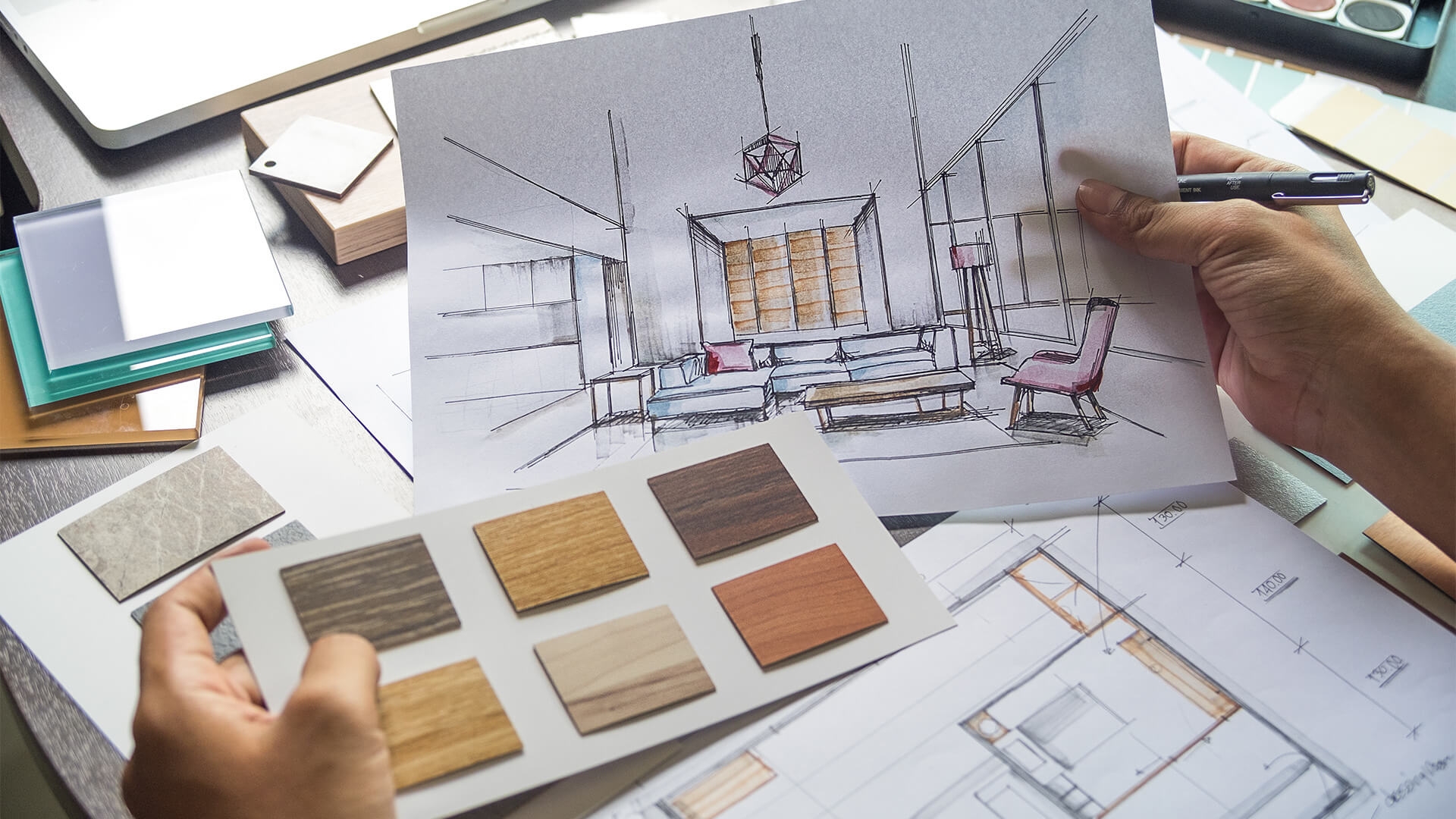 |
| Photo: build-review |
National average salary: $59,107 per year
Primary duties: Interior designers work with clients and teams to create design solutions for buildings, offices, and other rooms. The research materials and select decor and furniture. They are responsible for coordinating interior design projects from beginning to end.
Art director
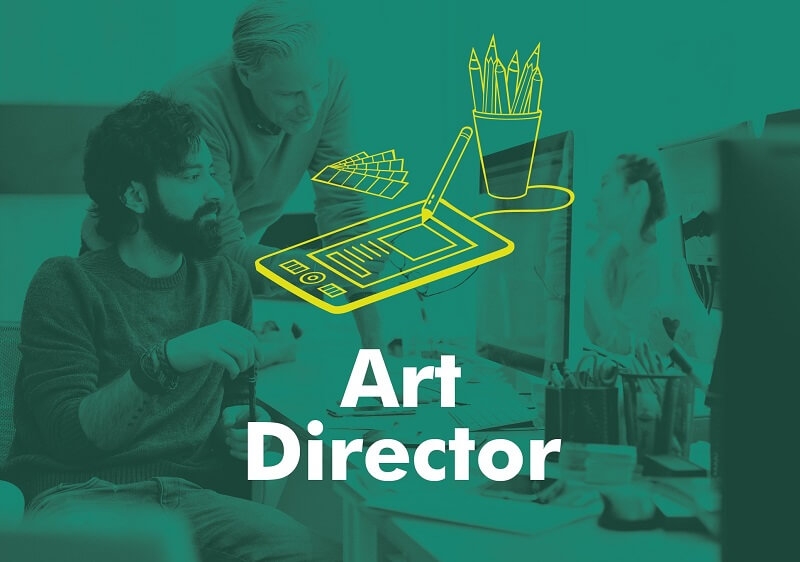 |
| Photo: timviec365 |
National average salary: $73,024 per year
Primary duties: Art directors manage the visual content for films, publications, or products. Art directors work on books, magazines, newspapers, movies, and advertising campaigns. They oversee the design and vision for the imagery, videos, and set designs. They may delegate tasks to graphic designers, photographers, or other creative staff.
The Future of the Fashion DesignerDesigners in the twenty-first century are beginning to adopt new technologies such as body-scanning for a custom fit, along with seamless and whole garment knitting technologies, which can manufacture garments with the push of a button. Both are forerunners in a movement toward automation that will once again revolutionize the fashion industry. Just as the sewing machine changed the face of fashion in the past, technology will change it in the future. Designers of the future, as they have in the past, will continue to serve their customer's needs but will do so utilizing new resources and tools. To create new product lines, designers in the future will utilize high-tech textiles, including those that possess healing, sun protection, and other unique qualities. Designing clothes in the future may have more to do with function than with fancy, in response to new consumer demands and preferences. |
 What Is Content Marketing and How It Works? What Is Content Marketing and How It Works? Content Marketing is important in any business, but not easy to understand its benefits, advantages or disadvantages, and how to get started. |
 What Is The Stock Market and How Does It Work? What Is The Stock Market and How Does It Work? What are the stock market and the role of the stock market? In order to understand the mechanics of the stock market, let's explore by ... |
 What is Social Media Management? What is Social Media Management? Social media management tools and services are designed to make marketing easier, which ultimately increases profits, especially for small businesses. Check out this article to ... |


























